Discover the perfect time to explore the breathtaking landscapes of Iceland with our ultimate guide. From seasonal highlights to weather insights, this blog post will help you plan your dream trip, ensuring you experience the stunning natural wonders, vibrant culture, and unique adventures that Iceland has to offer. Don’t miss out on the best times to witness the Northern Lights, midnight sun, and more!
Table of Contents
Why Visit Iceland?
Iceland, known as the Land of Fire and Ice, is a land of breathtaking landscapes, majestic waterfalls, dramatic coastlines, and mesmerizing northern lights. Whether you’re chasing the auroras, hiking through volcanic terrains, or soaking in geothermal lagoons, Iceland offers a magical experience for every traveler.
Importance of Timing Your Trip
The timing of your visit can greatly impact your Icelandic adventure. From experiencing the midnight sun in summer to witnessing the northern lights in winter, each season offers unique activities and sights. Planning your trip around the best time to visit ensures you maximize your experiences while minimizing challenges such as extreme weather or high tourist crowds.
Overview of Iceland’s Climate and Seasons
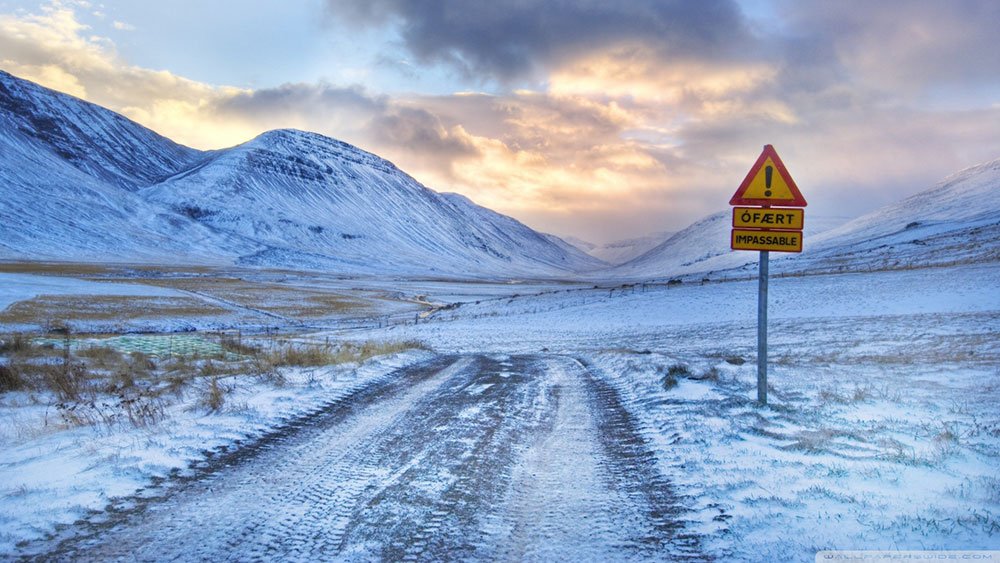
General Weather Patterns
Iceland’s climate is characterized by mild temperatures thanks to the North Atlantic Drift. However, weather can be unpredictable, with sudden rain, snow, or strong winds occurring throughout the year. Average temperatures range from -1°C (30°F) in winter to 15°C (59°F) in summer.
Daylight Variations Throughout the Year
Because of its high latitude, Iceland’s daylight varies greatly. Summer days are long, with 24-hour daylight during the Midnight Sun’s peak, while winter days are short, with just four to five hours of daylight.
Visiting Iceland in Winter (December to February)
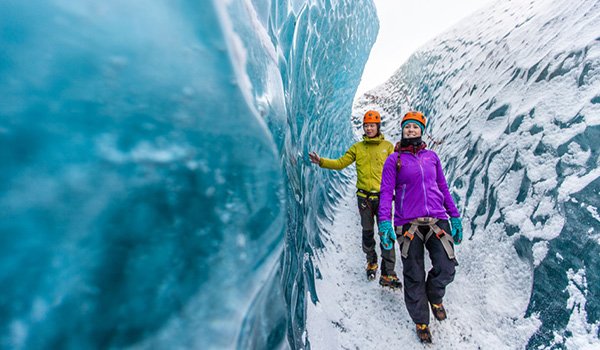
Temperature and Weather Conditions
Winter temperatures range from -1°C to 4°C (30°F to 39°F). Snow and icy conditions are common, especially in northern and highland areas.
Activities and Attractions
- Northern Lights Viewing: Winter’s long, dark nights provide optimal conditions for witnessing the auroras.
- Ice Caving and Glacier Tours: Explore stunning blue ice caves and go glacier hiking, activities exclusive to winter months.
Pros and Cons of Visiting in Winter
- Pros: Fewer tourists, magical winter landscapes, and prime northern lights viewing.
- Cons: Harsh weather, shorter days, and potential travel disruptions due to snowstorms.
Spring in Iceland (March to May)
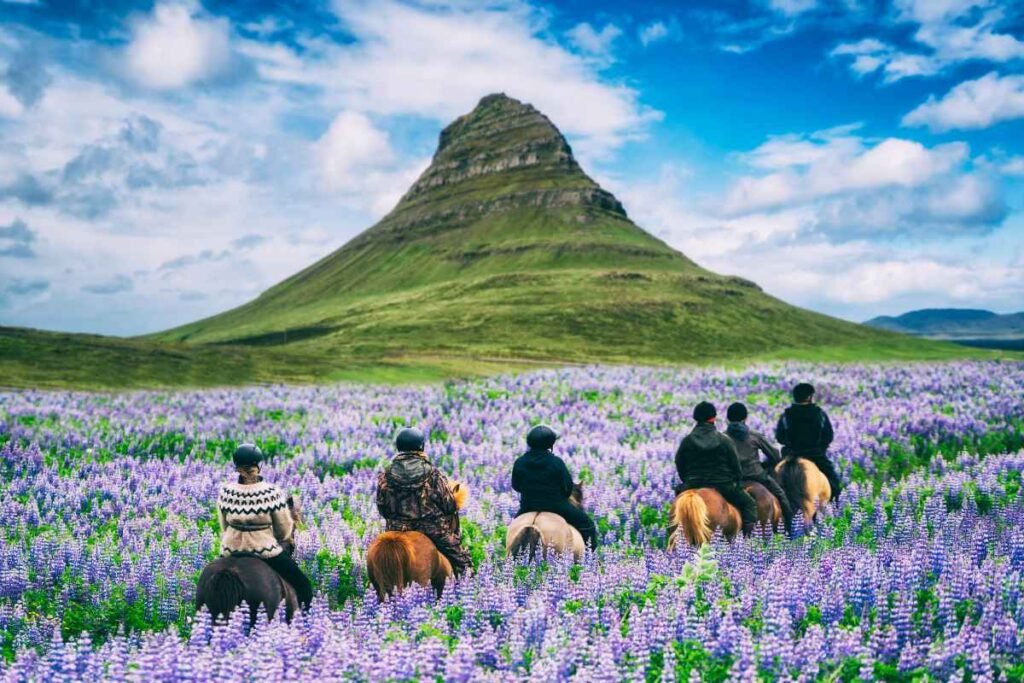
Weather and Climate Changes
Spring marks the transition from winter’s chill to milder temperatures, ranging from 0°C to 10°C (32°F to 50°F).
Activities and Attractions
- Whale Watching: Migratory whales return to Icelandic waters, making spring ideal for whale watching tours.
- Blooming Landscapes: As snow melts, vibrant flora begins to bloom, perfect for photography enthusiasts.
Pros and Cons of Visiting in Spring
- Pros: Moderate weather, fewer tourists, and scenic blooming landscapes.
- Cons: Unpredictable weather, with possible snow or rain showers.
Summer in Iceland (June to August)
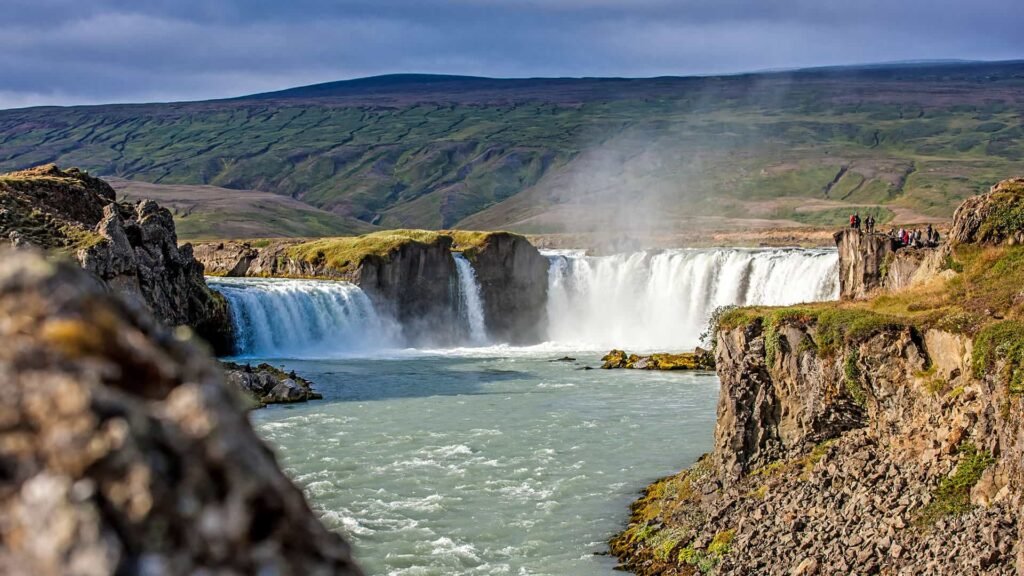
Warmest Months and Longest Days
Summer temperatures range from 10°C to 15°C (50°F to 59°F), with nearly 24-hour daylight due to the Midnight Sun.
Activities and Attractions
- Midnight Sun Experience: Enjoy outdoor activities round-the-clock, thanks to continuous daylight.
- Hiking and Road Trips: Explore Iceland’s vast wilderness, including the popular Ring Road and the highlands.
- Festivals and Events: Participate in vibrant cultural festivals and local events.
Pros and Cons of Visiting in Summer
- Pros: Pleasant weather, lush landscapes, and extensive activity options.
- Cons: High tourist numbers, increased prices, and crowded attractions.
Autumn in Iceland (September to November)
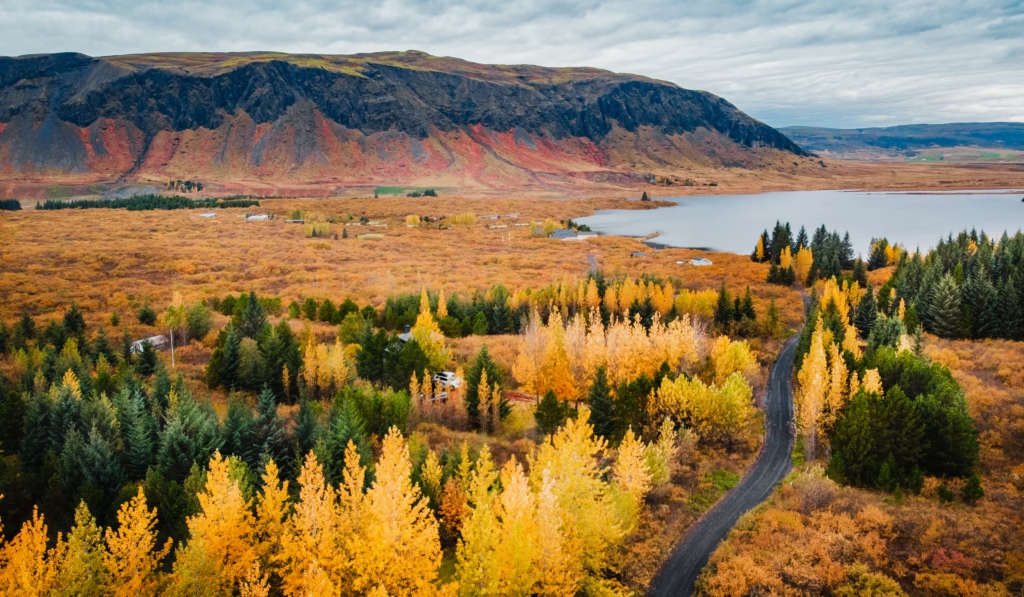
Cooling Temperatures and Changing Landscapes
Temperatures drop from 10°C to 0°C (50°F to 32°F) as fall foliage transforms Iceland’s landscapes into vibrant hues.
Activities and Attractions
- Northern Lights Season Begins: With the return of darkness, autumn offers the first chances to see the northern lights.
- Harvest Festivals: Enjoy local food festivals celebrating Iceland’s autumn harvest.
Pros and Cons of Visiting in Autumn
- Pros: Beautiful fall colors, fewer tourists, and early northern lights sightings.
- Cons: Unpredictable weather and shorter days.
Also Visit:
When Is the Best Time to Visit Iceland? A Comprehensive Overview
Best Time to Visit Iceland for Northern Lights Enthusiasts
Best Time to Visit Iceland for Photography Lovers
The Best Time to Visit Iceland for Whale Watching
Best Time to Visit Iceland for Couples and Romance
Conclusion
Choosing the best time to visit Iceland depends on your interests and travel goals. Whether chasing the northern lights, exploring ice caves, or enjoying the Midnight Sun, each season offers unique experiences. To avoid crowds and high prices, consider visiting in spring or autumn. Pack appropriately for the changing weather, and plan activities accordingly for an unforgettable Icelandic adventure.




